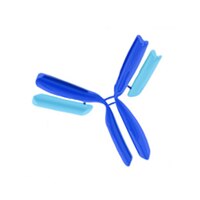437695 Sigma-AldrichAnti-Lipoic Acid Rabbit pAb
This Anti-Lipoic Acid Rabbit pAb is validated for use in ELISA, Frozen Sections, Immunoblotting, Paraffin Sections for the detection of Lipoic Acid.
More>> This Anti-Lipoic Acid Rabbit pAb is validated for use in ELISA, Frozen Sections, Immunoblotting, Paraffin Sections for the detection of Lipoic Acid. Less<<Synonyme: Anti-LA
Empfohlene Produkte
Übersicht
| Replacement Information |
|---|
Key Spec Table
| Species Reactivity | Host | Antibody Type |
|---|---|---|
| A Broad Range Of Species | Rb | Polyclonal Antibody |
Preis & Verfügbarkeit
| Bestellnummer | Verfügbarkeit | Verpackung | St./Pkg. | Preis | Menge | |
|---|---|---|---|---|---|---|
| 437695-100UL |
|
Kst.-Ampulle | 100 ul |
|
— |
| Product Information | |
|---|---|
| Form | Liquid |
| Formulation | serum diluted in buffer, 50% glycerol, pH 7.5. |
| Preservative | None |
| Quality Level | MQ100 |
| Biological Information | |
|---|---|
| Immunogen | lipoic acid conjugated to KLH |
| Host | Rabbit |
| Isotype | IgG |
| Species Reactivity |
|
| Antibody Type | Polyclonal Antibody |
| Physicochemical Information |
|---|
| Dimensions |
|---|
| Materials Information |
|---|
| Toxicological Information |
|---|
| Safety Information according to GHS |
|---|
| Safety Information |
|---|
| Product Usage Statements |
|---|
| Packaging Information |
|---|
| Transport Information |
|---|
| Supplemental Information |
|---|
| Specifications |
|---|
| Global Trade Item Number | |
|---|---|
| Bestellnummer | GTIN |
| 437695-100UL | 07790788059934 |
Documentation
Anti-Lipoic Acid Rabbit pAb SDB
| Titel |
|---|
Anti-Lipoic Acid Rabbit pAb Analysenzertifikate
| Titel | Chargennummer |
|---|---|
| 437695 |
Literatur
| Übersicht |
|---|
| Sasaki, M., et al. 2000. J. Autoimmun. 15, 51. Heitzer, T., et al. 2001. Free Radic. Biol. Med. 31, 53. Patrick. L. 2000. Altern. Med. Rev. 5, 290. Shi, S.S., et al. 1999. Antioxid. Redox Signal 1, 123. Humphries, K.M. and Szeda, L.I. 1998. Biochemistry 37, 15835. |







